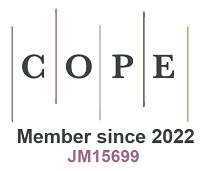A Commemorative Issue on 50 Years of Organoselenium Chemistry: Celebrating the 80th Birthday of Professor Alain Krief
I am honored to compile this Special Issue celebrating Professor Alain Krief’s legacy, particularly as he marks his 80th birthday. This issue highlights his pivotal role in organic selenium chemistry and its impact on organic synthesis. It acknowledges his contributions to novel synthetic methods and the advancement of chemistry, emphasizing the future significance of his work in the field. We are pleased to take this opportunity to illustrate the state of the art in organic selenium chemistry and the diverse applications of selenium across various fields.
Prof. Alain Krief was born in Tunis on 13th December 1942. He completed his Ph.D. in 1970 under the supervision of Prof. Jacqueline Ficini on cycloaddition of ynamines at the Université Pierre et Marie Curie in Paris, France. While working as a CNRS Research Associate (1968-1972), he made a ten-month postdoctoral stay at the laboratory of Prof. Elias J. Corey (Nobel Laureate, 1990) at Harvard University on sterol biosynthesis in 1970 (Prof. Krief contributed a research paper to this Special Issue on Sterol biosynthesis with a research highlight from double Nobel Laureate in Chemistry, Prof. K. B. Sharpless). In 1972, he was appointed as “Chargé de Cours” to head the newly established Laboratory of Organic Chemistry in Facultés Universitaires Notre-Dame de la Paix (now University of Namur), Belgium, a position he held until 1997. Subsequently, he became the Director of the Laboratoire de Chimie Organique de Synthèse (1997-2008). Notably, he was exceptionally promoted to a full professor in 1975 at the remarkable age of 33. Currently, Prof. Krief holds the status of an emeritus professor at the University of Namur (Belgium). Additionally, he serves as an adjunct professor at the University of Karachi (HEJ Research Institute, Pakistan) and a UNESCO research fellow at iThemba-Lab in Cape Town (South Africa).
Alain worked on a number of research subjects, demonstrating an abiding interest in bioorganic chemistry and the mechanism of sterol biosynthesis with an outstanding output of research that was summarized in more than 350 papers. Here, I would like to highlight his significant achievements, particularly in the field of organoselenium chemistry. While his work in cyclopropane chemistry and pyrethroids, including the innovative synthesis of chrysanthemic acid and its derivatives, has been notable, it is his organoselenium research that stands out. Alain Krief’s pioneering efforts in organoselenium chemistry have transformed the perception and utility of selenium in synthetic chemistry, elevating it from a neglected element to a key player in the field.
Alain Krief’s pioneering work in organoselenium chemistry has fundamentally advanced the field, expanding synthetic capabilities and developing key reagents and methods for modern synthesis. His contributions have been widely recognized with awards and leadership roles, reflecting his significant impact on chemical synthesis. As Executive Director of the IOCD, Krief fostered international collaboration and initiatives that promoted chemical sciences in developing countries, advancing education, sustainable practices, and research capacity. His efforts at IOCD have democratized scientific knowledge and highlighted chemistry’s role in global development.
In this Special Issue honoring him, we have assembled six papers contributed by authors from around the world. The first article is from a collaboration between my research groups in Belgium and China, focusing on the field of energy storage materials and battery technology, especially related to lithium-selenium (Li-Se) batteries. Li-Selenium batteries have been recognized as promising next-generation Lithium batteries with high energy density[1]. The second paper by Prof. M. Iqbal Choudhary and colleagues provides a comprehensive review of 25 years of biotransformation studies on bioactive compounds at the ICCBS. It highlights the synthesis of new analogs with enhanced pharmacokinetic profiles and biological activities, as well as the potential of biocatalytic transformations in creating structurally altered compounds for therapeutic applications[2]. Prof. Stefano A. Cerri from Italy in his article celebrates Professor Alain Krief’s visionary contribution to the future of chemistry through his integration of information science, knowledge transfer, and human learning, highlighting his ability to bridge the gap between chemistry and other disciplines for the advancement of science”[3]. We are deeply grateful to Prof. Vivian Wing-Wah Yam, the current and first female president of the IOCD, for her valuable contribution entitled “Luminescent alkynylplatinum(II) terpyridine-containing conjugated polymers: synthesis, characterization and photophysical studies”. Her study synthesizes and characterizes alkynylplatinum(II) terpyridine-containing conjugated polymers, revealing their unique dual emissive properties and thermo-responsive luminescence changes, which pave the way for the development of metal-containing polymeric systems with potential applications as thermochromic sensors[4]. The next review paper from Prof. Wei Yan from Singapore and China on “Selenium nanomaterials enabled flexible and wearable electronics” is highly appreciated. This review illustrates the huge application of selenium nanomaterials[5]. Prof. Hisashi Yamamoto contributed a feature article on “From Lewis acids to peptide chemistry”; this article outlines the author’s lab’s advancement in peptide synthesis, transitioning from Lewis acid catalysis to developing a substrate-controlled method overcoming solid-phase peptide synthesis (SPPS) limitations. It highlights the potential for innovation in peptide chemistry and encourages young researchers to join the field[6].
This Special Issue is a tribute to Professor Alain Krief’s profound impact on the field of organic selenium chemistry, commemorating his 80th birthday and celebrating his lasting legacy in shaping the future of chemical synthesis. It highlights Krief’s innovative work, which has transformed selenium from a neglected element to a cornerstone in synthetic chemistry. Additionally, the Issue acknowledges his visionary leadership at the IOCD, which has advanced the role of chemistry in global development.
DECLARATIONS
Authors’ contributions
The author contributed solely to this manuscript.
Availability of data and materials
Not applicable.
Financial support and sponsorship
None.
Conflicts of interest
Su BL is the Editor-in-Chief of Chemical Synthesis, and the author declared that there are no conflicts of interest.
Ethical approval and consent to participate
Not applicable.
Consent for publication
Not applicable.
Copyright
©The Author(s) 2023.
REFERENCES
1. Li H, Li C, Wang Y, et al. Pore structure unveiling effect to boost lithium-selenium batteries: selenium confined in hierarchically porous carbon derived from aluminum based MOFs. Chem Synth 2023;3:30.
2. Siddiqui M, Wahab A, Choudhary MI, Rahman A. Biotransformation studies on bioactive compounds: 25 years of interesting research at the ICCBS. Chem Synth 2023;3:25.
3. Cerri SA. Information, knowledge, and human learning for chemistry: the visionary contribution of Professor Alain Krief. Chem Synth 2023;3:18.
4. Cheng H, Yam VW. Luminescent alkynylplatinum(II) terpyridine-containing conjugated polymers: synthesis, characterization and photophysical studies. Chem Synth 2023;3:13.
5. Dang C, Liu M, Lin Z, Yan W. Selenium nanomaterials enabled flexible and wearable electronics. Chem Synth 2023;3:14.
Cite This Article
How to Cite
Download Citation
Export Citation File:
Type of Import
Tips on Downloading Citation
Citation Manager File Format
Type of Import
Direct Import: When the Direct Import option is selected (the default state), a dialogue box will give you the option to Save or Open the downloaded citation data. Choosing Open will either launch your citation manager or give you a choice of applications with which to use the metadata. The Save option saves the file locally for later use.
Indirect Import: When the Indirect Import option is selected, the metadata is displayed and may be copied and pasted as needed.


















Comments
Comments must be written in English. Spam, offensive content, impersonation, and private information will not be permitted. If any comment is reported and identified as inappropriate content by OAE staff, the comment will be removed without notice. If you have any queries or need any help, please contact us at [email protected].